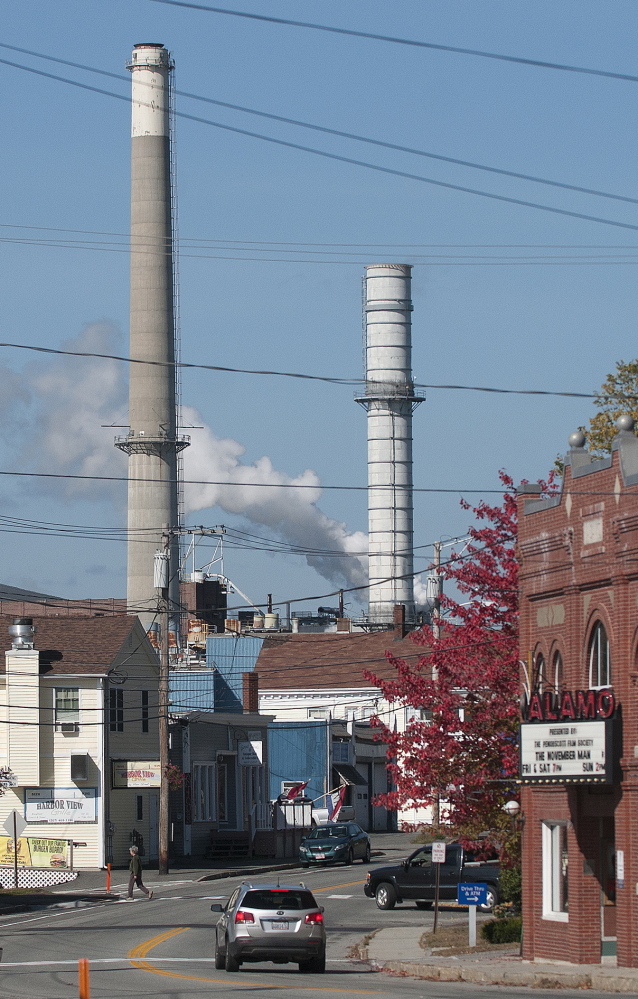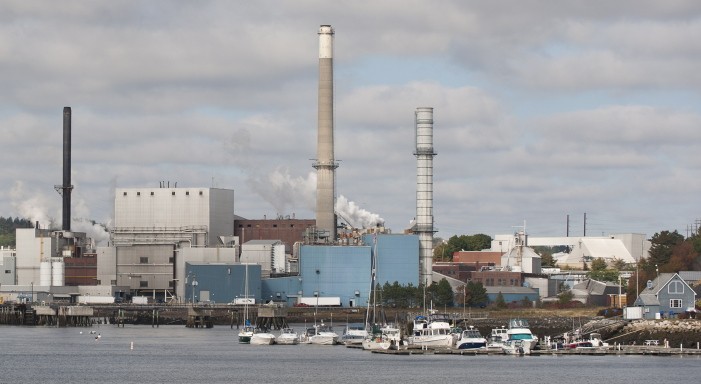It’s a drill Rosaire Pelletier has been through many times.
A Maine paper mill closes, and Pelletier, the governor’s senior adviser for forest products, is handed the task of trying to find a buyer. The state gets involved because, more often than not, tax breaks and other aid are needed to make a deal come together.
“It’s not an easy job,” concedes Pelletier, a 40-year veteran of the paper industry who uses an impressive list of contacts to market Maine’s shuttered mills. But declining demand for the type of paper Maine specializes in, coupled with increasing competition, does not create an ideal seller’s market, especially when the most recent mill owners couldn’t make a go of it.
Pelletier’s latest job is finding a buyer for the Verso Paper mill in Bucksport, where 500 millworkers will be out of a job in a few months. The company announced this month that it will close the mill, a long-term money loser, in December. Also on the market in Maine is the paper mill in East Millinocket – its sister mill in Millinocket is already being demolished – and a pulp mill in Old Town.
The three mills face an uncertain future as trends within the U.S. paper industry coalesce and make Pelletier’s job even harder. Not only has demand been declining at a rate of 3 percent to 7 percent annually for the past 15 years, but newer and more efficient mills have been built, especially in Asia, that can produce paper more cheaply and in greater volumes than aging mills in the United States.
And a potential buyer of a U.S. paper mill can have his pick. Because the domestic paper industry has shed mills to lose capacity in a saturated market, Maine’s three mills aren’t the only ones sporting for-sale signs. There are shuttered paper mills in northern Michigan and Wisconsin also on the market. Yet a company that is selling one of its mills is loath to do so to a competitor, said Mark Wilde, a senior analyst of the pulp, paper and forest product sectors for the Bank of Montreal. If the competitor buys the plant on the cheap, it could be in a position to undercut the previous owner.
That leaves selling the mill for scrap as the only alternative, said Wilde.
The goal of most states, he said, is to find a buyer who will install new machines that produce a different type of paper than the previous owner did, Wilde said. But in today’s market, he said, that’s often “wishful thinking.”
It takes years and millions of dollars to entirely convert a paper mill from one grade of paper to another. A newsprint mill in Whitby, Ontario, closed in 2010 and reopened just this spring as a packaging plant after its owner, Atlantic Packaging, invested millions and was able to get the Canadian government to agree to a break on its electricity costs. In April, paper industry giant Stora Enso spent $139 million to convert a machine at a mill in Finland from making fine paper to making container board.
Usually, a company that buys a mill for scrap will dismantle the paper machines and send them to other markets, like Latin America, where they are put back together, operated by cheaper labor and produce more paper, adding to a worldwide glut, Wilde said.
ALTERNATIVE USES
So what to do with a shuttered mill that isn’t sold for scrap?
“Sometimes, they look to repurpose a plant along a river, put up condos and apartments and put trails on the riverfront,” said Dick Kendall, executive director of the Pulp and Paper Manufacturing Association, based in Wisconsin. “But if the mill was the primary employer, which is often the case, there’s no need for (new) housing. It’s difficult.”
Some see at least the potential for other uses.
A couple of years ago, Great Works Internet, the Biddeford-based Internet and phone provider, was interested in setting up an operation in the Millinocket mill, which had been shut down in 2008 and put up for sale by Brookfield Asset Management.
The goal was to create a “data mill,” a term that GWI founder Fletcher Kittredge said he wishes he had coined.
The idea is to use the vast space to house servers, powered by an on-site electrical generator, which most mills have, and to tap into high-speed Internet connections available in some rural areas due to the state’s “Three-Ring Binder” program.
The on-site reliable electricity, strong Internet connections and space to house both the machinery and the people using the computers “is very valuable in the digital economy,” Kittredge said. But the state favored Portsmouth, New Hampshire-based investment firm Cate Street Capital as the mill’s buyer because it planned to restart the paper machines. Cate Street’s plan was expected to provide jobs for several hundred workers who became unemployed when Brookfield shut the plant down.
Last month, Cate Street’s subsidiary, Great Northern Paper, filed for Chapter 7 bankruptcy to liquidate its assets.
Wilde, the Bank of Montreal analyst, said that was no surprise in the industry.
Rattling off a list of other owners of the Millinocket and East Millinocket mills over the past quarter-century, Wilde said, “I’ve forgotten how many sets of hands those mills have gone through. You’re fighting the tide.”
Wilde said the fact that the East Millinocket mill is owned by an investment company with no other paper-making holdings could make it easier to sell because there are no concerns about the plant going to a competitor.
Still, he said, “the market has shrunk so much” that not many companies will have confidence they can make a go of it, even at a marked-down price.
Markets aren’t the only things that have shrunk. Maine’s paper-making workforce peaked in 1967 at more than 18,000 workers. The loss of 900 workers expected from the 2014 closures will bring that number closer to 6,000. And a Maine Department of Labor report projects the industry will continue to contract, employing 5,200 by 2020.
Glen Ostle, editor of a trade magazine published by TAPPI, a worldwide association for the pulp and paper industry, said he’s seen some attempts at converting paper mills into biofuel operations, or using nanocellulose extracted from wood to manufacture composites using new technologies. But they are not on a scale to replace shuttered paper mills.
“It’s sad times,” he said. “The paper industry has four parts –fine paper, tissue, packaging and board materials – and only tissue and packaging are healthy.”
CALLING INDUSTRY CONTACTS
Undaunted, Pelletier said he follows a familiar routine when a Maine mill goes on the market. He goes through his list of 426 industry contacts, making sure potential buyers have heard the news.
“I call the paper (industry) people; if there’s no paper people (interested), we look at investors considering getting into the pulp and paper industry,” said Pelletier, who took on the role of the state’s paper mill dealer under John Baldacci and has continued under Gov. Paul LePage.
“I took the challenge (with the Millinocket mill) and put it back together and now I’m facing the same thing I was seven or eight years ago,” said Pelletier, who had worked for Fraser Paper for 40 years before taking the state job.
Pelletier said there is interest in both the Old Town and East Millinocket mills, although he declined to identify possible buyers.
“They’ve been up” to look over the mills, he said of the potential buyers. “Some of them have been up more than once, and there were others that knocked on the door.”
Pelletier said he’s had some notable successes, especially the sale of a former Domtar paper mill in the northern Maine town of Woodland to an investment group, which decided to invest $120 million in two new machines to make tissue paper. That’s just about the only segment of the paper industry for which demand remains strong.
Company and state officials broke ground Friday morning on the expansion that will house the two new machines.
That’s the best case state officials can hope for, Pelletier said, because it brings in money to the state and gets people back to work.
“At the end of the story, it’s all about lives and livelihoods,” he said.
Send questions/comments to the editors.




